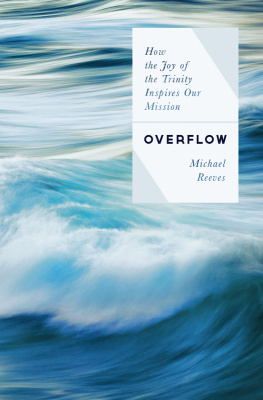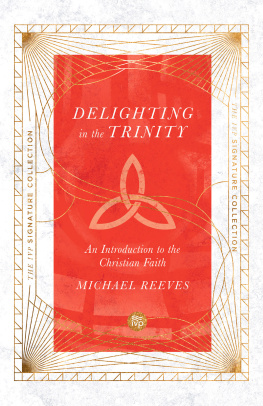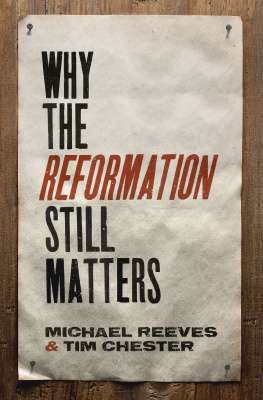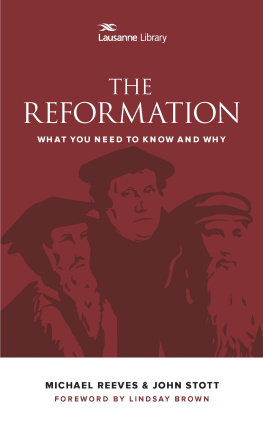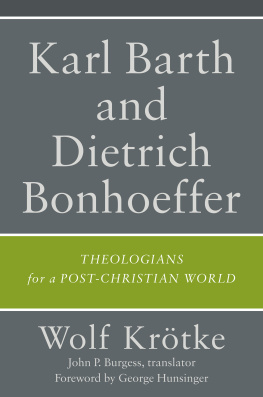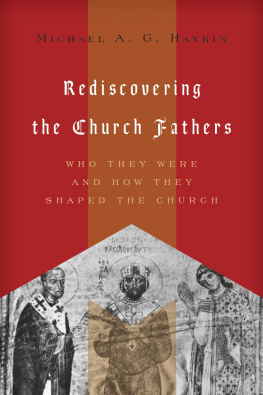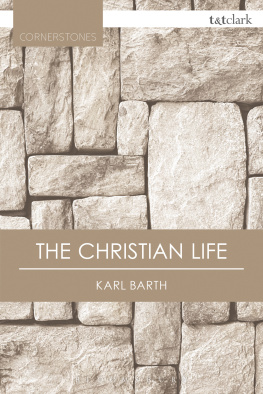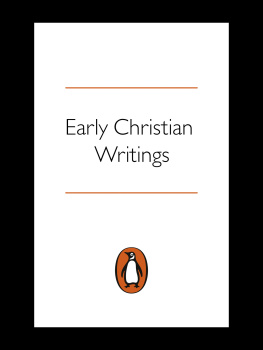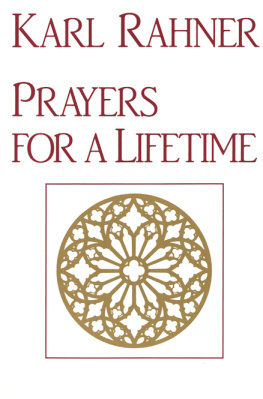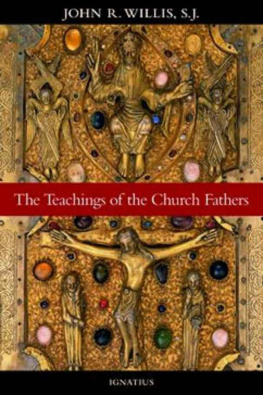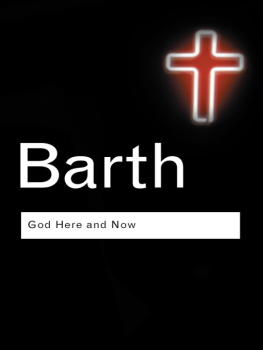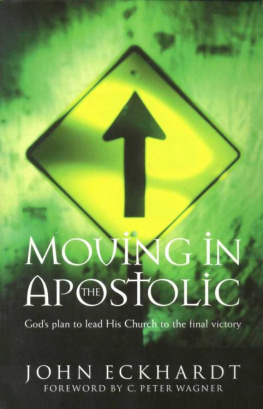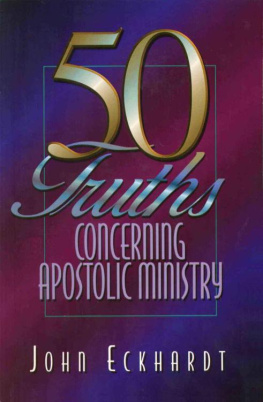Table of Contents
Landmarks
When Thomas Aquinas died at Fossanova in 1274, the monks there cut off his head and various other body parts to keep as relics. Some years later, they also exhumed his corpse so as to boil off the flesh and keep the bones in a more convenient place for veneration.
Nearly two hundred and fifty years would pass. Then another monkthis time from northern Germanywould set out to oppose the veneration of Aquinass head. For this monk would like neither relics nor so much of the content of that skull. Directly challenging the now Saint Thomas Aquinas and his use of Aristotles logic and ethics, he would write,
Virtually the entire Ethics of Aristotle is the worst enemy of grace.... It is an error to say that no man can become a theologian without Aristotle.... Indeed, no one can become a theologian unless he becomes one without Aristotle.... Briefly, the whole Aristotle is to theology as darkness is to light.
This monk would not pull punches! There was about to be a revolution in theology.
Theologians You Should Know: An Introduction: From the Apostolic Fathers to the 21st Century
Copyright 2016 by Michael Reeves
Published by Crossway
1300 Crescent Street
Wheaton, Illinois 60187
All rights reserved. No part of this publication may be reproduced, stored in a retrieval system, or transmitted in any form by any means, electronic, mechanical, photocopy, recording, or otherwise, without the prior permission of the publisher, except as provided for by USA copyright law. Crossway is a registered trademark in the United States of America.
Chapters 1 to 6 first published 2010 as The Breeze of the Centuries , by Inter-Varsity Press, Nottingham, England.
Chapters 7 to 12 first published 2011 as On Giants Shoulders , by Inter-Varsity Press, Nottingham, England.
Cover design: Faceout Studios
Line drawings by Kev Jones
First printing 2016
Unless otherwise indicated, Scripture quotations are from the ESV Bible (The Holy Bible, English Standard Version), copyright 2001 by Crossway, a publishing ministry of Good News Publishers. Used by permission. All rights reserved.
The Scripture quotation marked KJV is from the King James Version of the Bible.
All emphases in Scripture quotations have been added by the author.
Trade paperback ISBN: 978-1-4335-5086-7
ePub ISBN: 978-1-4335-5089-8
PDF ISBN: 978-1-4335-5087-4
Mobipocket ISBN: 978-1-4335-5088-1
Library of Congress Cataloging-in-Publication Data
Reeves, Michael (Michael D.)
Theologians you should know : an introduction from the apostolic fathers to the 21st century / Michael Reeves.
1 online resource.
Includes bibliographical references and index.
Description based on print version record and CIP data provided by publisher; resource not viewed.
ISBN 978-1-4335-5087-4 (pdf) ISBN 978-1-4335-5088-1 (mobi) ISBN 978-1-4335-5089-8 (epub) ISBN 978-1-4335-5086-7 (tp)
1. Biblical scholars--Biography. 2. TheologiansBiography. 3. Church history. I. Title.
BS501.A1
230.092'2dc23
[B]
2015026129
Crossway is a publishing ministry of Good News Publishers.
2022-03-04 08:15:47 AM
Anselm
As Augustine lay dying in Hippo in 430, Vandal hordes surrounded the city. And for the next few hundred years such Germanic tribes kept Europe so unstable and illiterate that serious theological study was well nigh impossible. Thus no truly great theological mind emerged again until the eleventh century, in Anselm.
Anselms Life
Anselm was born in 1033 in the shadow of the Matterhorn, in the northern Italian town of Aosta. Little is known of his youth, but his mother seems to have been the one who held the home together, for Anselm and his father, Gundulf, cordially disliked each other. When Anselms mother died, it did not take long for things to fall apart, and, aged twenty-three, Anselm walked out. For three years he wandered Burgundy and France, perhaps looking for a life, perhaps sampling it in ways not possible back at home.
In 1059 Anselm arrived at the Benedictine abbey of Bec in Normandy. It was not that he was interested in becoming a monk; it was that the monastery had an external school run by Lanfranc, the abbeys prior, and Lanfrancs scholarly reputation was magnetic. However, it did not take long for the appeals of the monastery to take hold, and within a year Anselm entered the abbey as a novice monk.
The all-embracing life of the cloister was perfectly suited to Anselm, who was soon known for his severe personal austerity, seriousness, and precision. The lack of food and sleep also induced hallucinatory experiences that were to be part and parcel of his mystical bent. When he had arrived at Bec, Anselm had had minimal education, but his intense intellectual brilliance soon won him a name as an inspirational teacher, as exacting in his thought as he was in his lifestyle.
Anselm was no cold fish, though. Again and again contemporaries spoke of his exuberance in conversation and his winning charm. Yet his personal warmth was more than temperamental: it was an expression of his novel understanding of friendship. In the eleventh century, friendship was viewed in quite businesslike terms, as an alliance entered into to achieve some common purpose; Anselm saw friendship as a union of souls, and so a foretaste of the harmony of heaven.
As such, Anselm would write to fellow monks describing the passionate embraces and kisses they had and would share. And he would do so in language so physical it makes for embarrassing reading: my arms stretch out to your embraces; my lips long for your kisses. Unsurprisingly, many have therefore wondered if Anselm was homosexual. That is quite possible, but it does not explain the rationale for the kissing and embracing. Anselm wrote of such things in open letters so that others might learn from the practice, so it is clear that Anselm was not describing forbidden yearnings and acts; moreover, he could write them to people he had never met. It was that he viewed physical embraces as the external signs of the union of souls found in friendship.
The world that Anselm had left outside the monastery was one of feudalism and strict social hierarchy, but the spiritual world he had entered was, if anything, just as tiered. At the top of the chain of being was, of course, God; just below God sat Mary, devotion to whom was gathering strength (something Anselm, who was prepared to refer to Mary as reconciler of the world, was instrumental in assisting); below her were the other saints, who were also used as intermediaries; they, along with the angels, existed above humans on earth, who existed above animals, plants, and, finally, the inanimate.
It was also a world of deliberate, cultivated introspection as monks worked to fill themselves with the horror of self and the knowledge of God. But with no sense of spiritual security underlying the introspection, it was a theological system full of dread. The sense of sheer terror at the thought of committing any sin can be seen when, one day, Anselm ate pickled eel before remembering that eating raw flesh was against the Mosaic law. Seeing his deep distress, his friend Eadmer consoled him, saying, The salt has removed the rawness of the flesh, to which Anselm responded, You have saved me from being tortured by the memory of sin. Almost the only hope of salvation was through the committed monastic life, and so Anselm wished that everyone would become a monk or a nun. Few would be saved, and most of those, he was sure, would be monks or nuns. Even then, the monks and nuns had to be resolute in their abandonment of the world. As he wrote to one nun,
Let all your conversation be in the cloister, not in the world. This world is nothing to you, nothing but dung, if you wish to be a nun and spouse of God.... Do not visit your relatives, they do not need your advice, nor you theirs. Your way of life is cut off from theirs. Let all your desire be for God.


